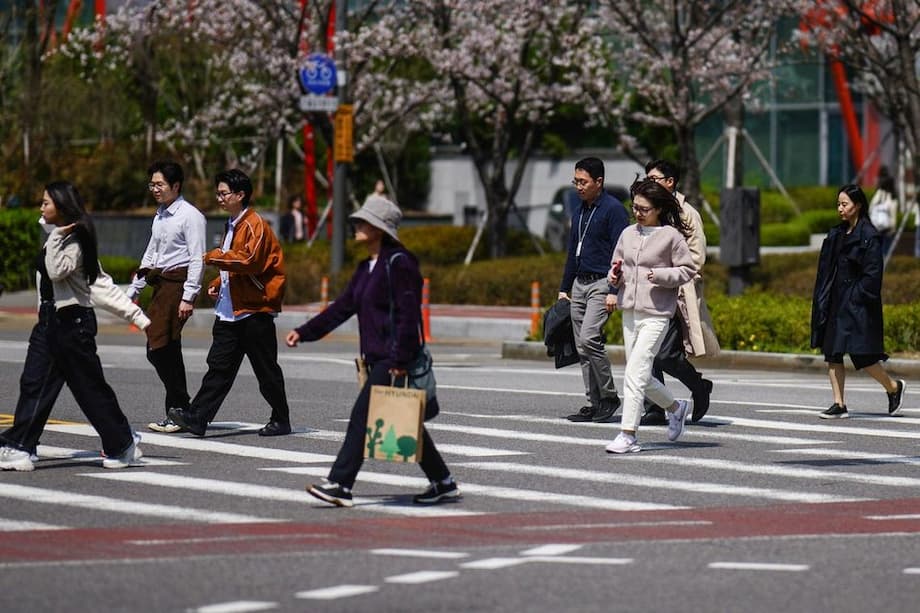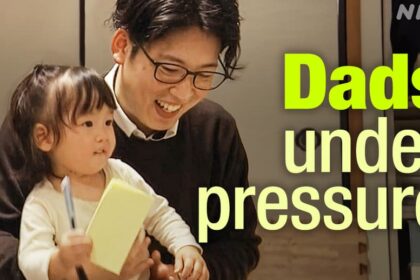A new family norm takes hold
South Korea is moving away from a one earner household model and toward families where both parents work. Government data show that 58.5 percent of married households with children under 18 had two working parents in 2024, the highest share on record. Among families with children aged six or younger, the dual income share reached 53.2 percent. These changes reflect rising female employment, more fathers taking leave, and the financial reality of raising children in a high cost society.
- A new family norm takes hold
- Why more couples rely on two paychecks
- More women at work, fewer career breaks
- Fathers step into caregiving
- Work from home and the double shift
- Commuting, time, and the hidden costs of care
- Fewer households with children, more people living alone
- Politics and the gender debate
- Policy response, and what helps families
- What to Know
The womens employment rate for ages 15 to 64 climbed to 62.1 percent in 2024, while men stood at 73.5 percent. Women in their early 30s reached 73.5 percent, a strong jump from a decade ago. Fewer married women are categorized by the government as career interrupted, a label commonly applied to women who left jobs after marriage or childbirth and then faced obstacles returning. That share fell to 15.9 percent in 2024 from 21.7 percent in 2015.
Care patterns inside the home are shifting too. In 2024, 42,000 men received parental leave benefits, a first for the country to surpass 40,000. Men now account for nearly one third of all parental leave recipients, compared with 5.6 percent a decade earlier. More fathers are also using shortened working hours for childcare, with usage up almost twentyfold in ten years. The number of married households with children under 18 fell by 158,000 from 2023 to 3.94 million, but dual income households among them dropped by only 22,000. As the pool of families with children shrinks, the share with two earners keeps rising. Rates are highest among couples in their 30s at 61.5 percent, followed by couples in their 40s at 59.2 percent.
Why more couples rely on two paychecks
Raising children is expensive in Korea. Families juggle housing costs, long schooling hours, and private tutoring, on top of unstable job prospects for many young workers. Two incomes help hedge these pressures. At the same time, fewer children are being born, so a larger share of the remaining families with children depend on both parents working. Together, cost pressures and changing norms about motherhood and work are pushing dual income families to become the default for parents in their 30s and 40s.
Values are shifting as well. Surveys indicate many Koreans in their 30s believe both spouses should contribute to family income. Expectations that mothers exit the workforce are easing as education levels rise and as employers expand leave and flexibility. The term double income no kids has entered common use, describing couples who prioritize financial stability and career goals before starting a family.
A broader international picture supports these patterns. Across the OECD, fertility fell to an average total fertility rate of 1.5 in 2022, and Korea sits at the bottom of the table. Countries that help parents balance work and care often sustain higher births than those that do not. Affordable childcare, paid leave, and flexible work rights matter, as the OECD notes in its review of fertility drivers here.
More women at work, fewer career breaks
Women aged 15 to 64 set a new high in 2024 with a 62.1 percent employment rate. Among women in their early 30s, the rate reached 73.5 percent. A shrinking share of married women are classified as career interrupted, a government label for those who left jobs after marriage or childbirth and later struggled to return. That share fell to 15.9 percent in 2024, from 21.7 percent in 2015.
Representation at the top is improving gradually. Women accounted for 26.3 percent of senior civil servants at grade four or higher in 2024. Among local government officials at grade five or higher, women reached 34.6 percent. Across all sectors, women made up 22.5 percent of managers, and the figure in public institutions climbed to 25.4 percent compared with a decade ago.
Progress on leadership and employment helps normalize dual income families. It also lowers the career penalty mothers have historically paid. Return to work programs, reliable childcare, and predictable hours make it easier to stay in the labor market through life events such as childbirth.
Fathers step into caregiving
Male participation in care is rising from a low base. In 2024, 42,000 men received parental leave benefits, the first time the figure crossed 40,000. Men now account for almost one third of all parental leave recipients, up from 5.6 percent a decade earlier. The number of men using shortened working hours for childcare has jumped nearly twentyfold over ten years.
The culture around fatherhood is changing across East Asia, and Korea is part of that shift. High profile stories of men taking extended leave have helped normalize the idea that fathers share child care and housework. When men participate early, evidence from many countries shows that care duties remain more equal over time and mothers face less pressure to exit work.
Work from home and the double shift
Remote work has altered the equation inside dual earner households. Daily diary studies that tracked Korean couples during the pandemic found that working from home increased family tasks for both spouses, yet the burden and emotional strain fell more heavily on wives. When wives worked from home, husbands reduced their family task completion, while the reverse did not hold. Wives reported higher work to family conflict and more guilt toward family on days they focused on work tasks.
The same research points to practical ways to ease pressure. When husbands had flexible schedules, wives working from home completed more work tasks. Employers can help by setting realistic expectations for output, offering true flexibility to fathers as well as mothers, and recognizing that remote workers often absorb extra care duties during the day.
Commuting, time, and the hidden costs of care
Time outside the home shapes who does what at home. A cross country study comparing dual earner couples in Spain, Italy, Korea, and the United Kingdom found that men commute longer on average across countries. In Korea, the presence of children did not widen the gender gap in commuting time as it did in some European cases, but it did influence how households use transport. Women are more likely to rely on public and active transport, while men use private cars more often.
Long commutes reduce the time window for pickups, meals, and bedtime routines. Shorter commutes, flexible arrival times, and reliable public transport near childcare centers can make a visible difference in who can share school runs and medical appointments. Small changes in transport time accumulate into large differences across a week for families with young children.
Fewer households with children, more people living alone
Even as the share of dual income families rises, the number of households raising children is shrinking. In 2024 there were 3.94 million married households with children under 18, down 158,000 from the year before. Among them, the number of dual income households fell by only 22,000, which means a larger proportion of the remaining families with children have two earners.
At the same time, single person households keep growing. They reached 8.05 million in 2024, equal to 36.1 percent of all households. Men in their 30s form the largest share among men, and women in their 60s form the largest share among women. Retail, housing design, and local services are already adjusting to this structure. It also underscores the need for community based care and social ties for older adults living alone.
Politics and the gender debate
These household shifts land in the middle of a heated political conversation about gender. Research on Korean public opinion shows a widening gap in attitudes between young men and young women. Some men view gender policy as a zero sum struggle, while many women cite persistent inequality in home and work as a reason to delay or avoid marriage and parenthood. Online communities have amplified this divide and fed a backlash narrative that collides with official equality goals.
That tension matters because trust is essential for policy success. Parents weigh costs they can see, like housing and childcare fees, along with less visible costs, like career penalties and social expectations. If men and women interpret the same policies in hostile ways, take up will lag and progress will slow. Efforts that acknowledge job insecurity for young men and the motherhood penalty for young women can reduce the sense of competition and draw support from both sides.
Policy response, and what helps families
The Ministry of Gender Equality and Family says the new statistics highlight social changes that call for responsive policy. The ministry plans to keep tracking family structure, career interruption, work life balance, and representation, and to promote programs that improve daily life. The data point to practical directions.
Affordable early childhood education and care, paid parental leave that both parents can use, and flexible work rights are the core tools that raise female employment and reduce the career penalty of motherhood. Evidence from the OECD shows that where parents can combine work and care, fertility is higher than in countries with weak support, even if it still stays below replacement. A coherent package that tackles childcare supply and quality, cost, and working time tends to deliver the strongest results OECD analysis.
For Korea, the next gains likely come from concrete steps with parents in mind. Increase wage replacement for parental leave at middle incomes so that fathers can afford to take time, and reserve a non transferable portion of leave for each parent to encourage take up by men. Expand infant care places and extend opening hours to match common work schedules. Support safe part time options with pro rated benefits for both parents during the toddler years. Reinforce the right to request flexible start and finish times, and help managers review workloads rather than assume availability late into the evening. Enforce equal treatment for parents returning from leave and publish pay and promotion statistics by gender to track progress.
Housing policy also belongs in a family agenda. High deposits and rents compress the timeline for family formation. Expanding affordable rental supply near employment hubs and childcare centers can reduce the need for long commutes and make two paychecks more practical when children are young.
What to Know
- Dual income households made up 58.5 percent of married families with children under 18 in 2024, a record high.
- Among families with children aged six or younger, 53.2 percent had two working parents.
- Women aged 15 to 64 had a 62.1 percent employment rate in 2024, with 73.5 percent among women in their early 30s.
- The share of married women classified as career interrupted fell to 15.9 percent, from 21.7 percent in 2015.
- Men receiving parental leave benefits reached 42,000 in 2024, roughly one third of recipients.
- Married households with children under 18 fell to 3.94 million in 2024, down 158,000 year on year.
- Single person households rose to 8.05 million, or 36.1 percent of all households.
- Women hold 26.3 percent of senior civil service posts and 22.5 percent of managerial jobs across sectors.
- Fertility in Korea remains the lowest in the OECD, making work and care support central to any family policy.
- Policies that expand childcare, encourage fathers leave, and improve flexible work are most likely to sustain dual income families.












